How Much Space Do Chickens Need?
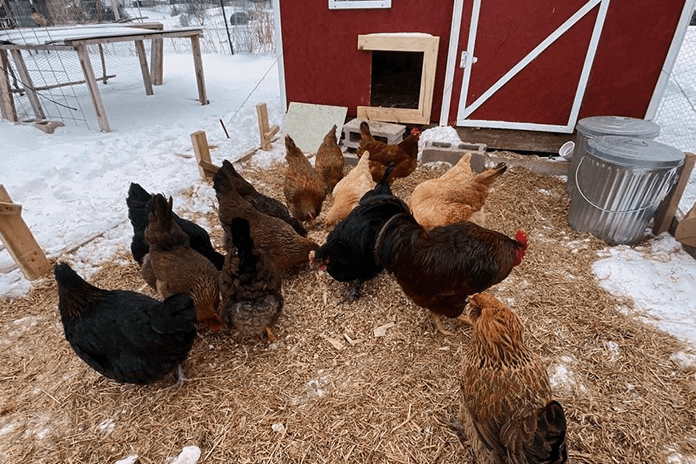
When it comes to chicken runs or chicken coops, size does matter! How much space do chickens need inside the run or coop?
Like humans, chickens like their own personal space. When a chicken run becomes too crowded, they feel stressed and sad. But how much space do they need? And can I keep chickens in a small backyard? We’ll answer all the questions you might have in this article.
When you’re not up to reading the entire article, enter the number of chickens you have in our chicken coop calculator!
- Difference between a chicken run and a chicken coop?
- What is the perfect size of a chicken run?
- How big should a chicken coop be?
- What is free-range chicken?
- Can I keep chickens in a small backyard?
- Possible problems when chickens don’t have enough space.
difference between a chicken run and a chicken coop?
When you just started thinking about keeping and raising chickens, all the information and different terms you find online can be a bit overwhelming.
So we’ll start at the beginning. Chickens always need inside and outside space. We call the inside space: a chicken coop and the outside space: a chicken run.
What is a chicken run?
The outdoor enclosed space provided for your chickens is what we call a chicken run. This is where they hang out during the daytime. It’s where they run around, take a dust bath, relax in the sun, roam around, and scratch their feet in the dirt,…
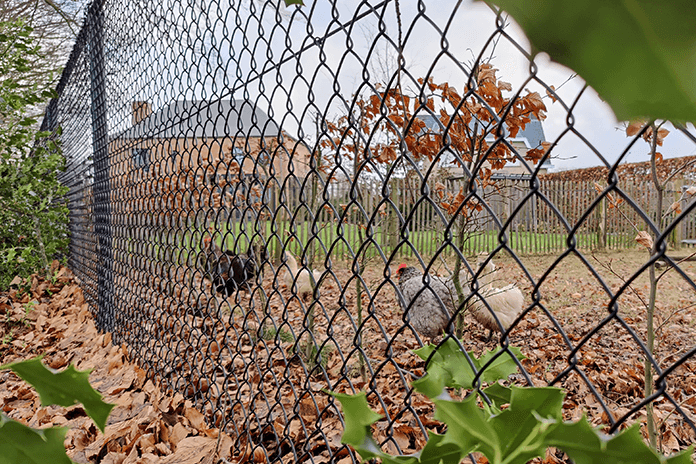
A chicken run can be roofed and enclosed or just fenced, depending on the type of run, but overall, the term ‘chicken run’ refers to the outside space they use during daytime.
What is a chicken coop?
You can find the chicken coop attached to or inside the chicken run. A coop is an inside space for chickens to sleep on their roosting perch and lay eggs in the attached nesting boxes. This is not a space where they hang out during the daytime (except for laying eggs or brooding). If your chicken doesn’t leave the chicken coop during the day, check for signs of illness or wounds.
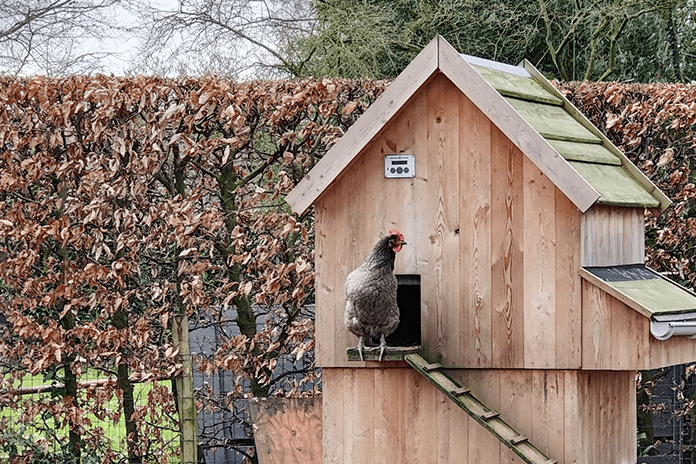
What is the perfect size For a chicken run?
The rule of thumb is that you provide a minimum of 10 square feet per chicken. When keeping ten chickens, you’ll need 10 x 10 or 100 square feet for your outside run.
The bigger the chicken run, the happier chickens. But not everyone has much spare room in the backyard to install a huge run for their garden pets. So always be realistic when determining how many chickens you should keep.
This is just the outer part, the run itself, and does not include the chicken coop. We’ll get to the chicken coop later.
Some might say that 10 square feet per hen are on the small side, but you can always go bigger if you want and have the space. It’s a recommended size that most chicken specialists will propose, but keep in mind never to go smaller.
You can also consider including some entertainment activities in the chicken run to keep everybody happy and healthy.
Activities inside the chicken run
Dust bath area
Chickens love (love!) dust baths. They don’t bathe in water like humans or other animals; chickens clean themselves with dust baths. Make the dust bath area big enough so they can enjoy it simultaneously. Any loose dirt or dry sand can create a dust bath.
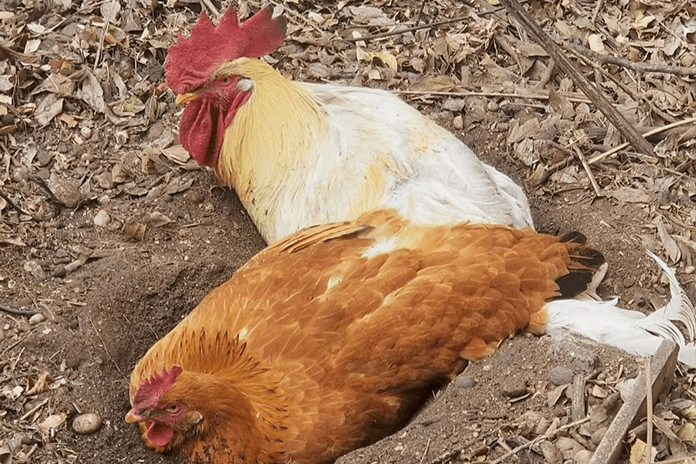
Leaf piles
Provide a place where they can scratch their feet in some dry leaves, grass, or dry sand. They’re constantly looking for bugs or insects by rubbing their feet around. Please challenge them by creating a pile of leaves to look for a tasty snack.
Just keep in mind. The more outside space you give your chickens, the better.
How big Should a chicken coop be?
The actual chicken coop needs to be roughly 3 to 5 square feet per chicken and provide at least two nesting boxes and one nesting box per 3 to 4 hens.
So, if you want to keep ten chickens, your chicken coop needs to be 30-50 square feet, and you will need at least 3 nesting boxes. If you live in a very cold or stormy area, you can provide more coop space as your chickens won’t always be able to go outside.
You can calculate the minimum requirements for your flock with our chicken coop size calculator.
Essential features inside the chicken coop:
- Roosting perch
- Nesting boxes
- Food and water supply
Roosting perch
Chickens sleep on a roosting perch to protect themselves from predators and bacteria. Place the roosts at least 1,5 – 3 feet and construct roosting perches from wood rather than metal material. Provide around 8 inches of roosting bar per chicken. More is fine, but chickens snuggle up next to each other during cold nights.
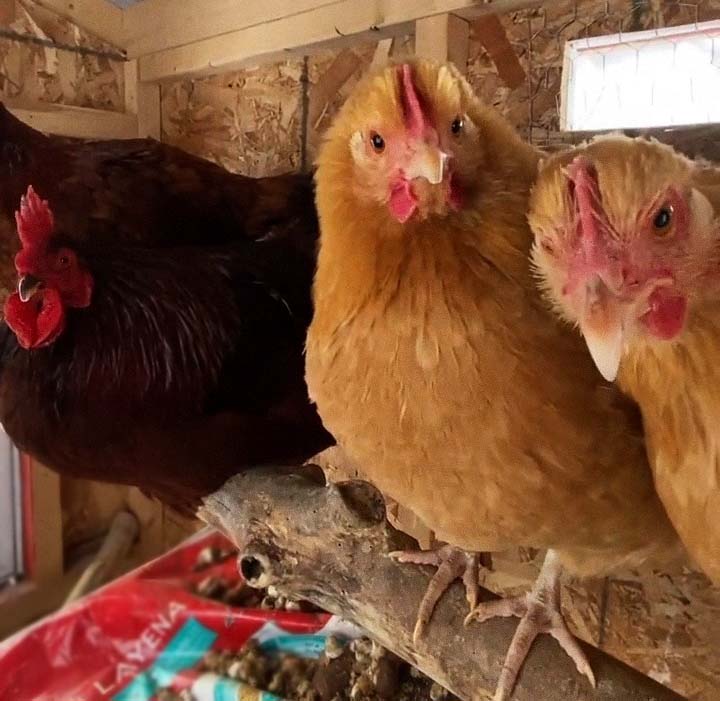
Nesting boxes
Create a quiet and separate place for your hens to lay eggs (or brood them if wanted). Supply one nesting box per 4 to 5 hens and line them with dry material such as wood shaving, straw, or nesting box pads. You can even install a nesting box curtain to create more privacy. Chickens use their nesting boxes solely to lay eggs, so ensure no hens sleep or poop inside the nesting box.
Food and water supply
Always provide your chickens with water and food and keep the supply elevated from the ground. Keep the food and water as far away from the roosts as possible to prevent the chickens pooping in them.
Other features such as insulation, ventilation, lighting, litter trays, heated floor pads, and automatic chicken coop doors to protect them from predators could be very useful.
What is free-range chicken?
We’ve talked about the size of the chicken run, depending on the number of chickens you have, so all chickens you’ll raise will be free-range chickens. The term is mainly used for commercial purposes. For instance, when buying pre-cooked free-range meat chicken at the grocery store, it means that (depending on where the chicken came from) the chicken had access to outside space. There is also a difference between, for example, US and EU laws concerning the term ‘free-range.’
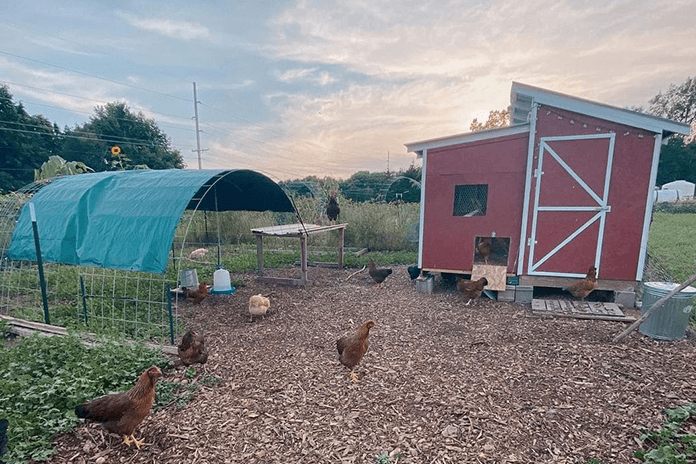
If you keep chickens in your backyard, chances are very likely they have access to outdoor space, so all your chickens are free-range chickens. However, still guarded by a fenced area. Some say the only natural, free-range chickens are the ones that run free in nature. We’ll let you decide who’s right on this topic ;-).
Can i keep chickens in a small backyard?
The more room they have, the happier your chickens are. So, if you only have a small terrace or patio, it’s better not to raise chickens. Maybe a community garden can be a good idea in that case. Be realistic.
On the other hand, you don’t need a huge garden to keep a couple of chickens if you intend to keep the flock small. Chickens like company, so never place them alone. Keeping three chickens is best, keeping two a minimum. That way, you don’t need loads of space and still have a nice amount of eggs every week in spring and summer.
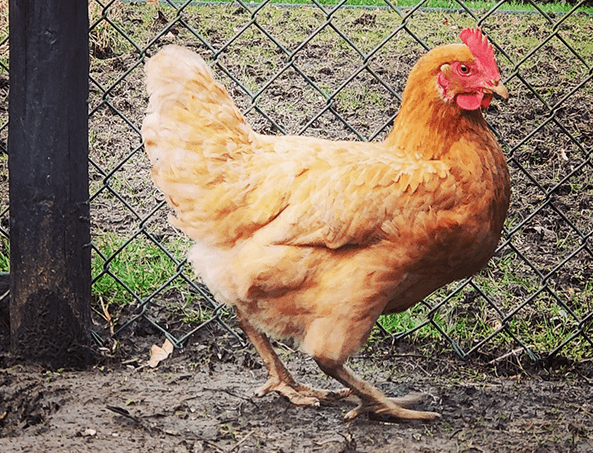
Some tiny chicken breeds, such as Bantams or Silkies, don’t need much space. If you have a small backyard, maybe a different and smaller breed can be a solution for you.
Remember that you’ll need a minimum of 10 square feet per chicken for standard-sized breeds. For small chicken breeds, such as Bantams, around 5 square feet per chicken will suffice. Check out our chicken coop space calculator!
Possible problems when chickens don’t have enough space
- Health Issues
- Bullying
- Hens stop their egg production
When packed in a small space for too long with other chickens, they will be unhappy, unhealthy and basically, feel miserable. So never let your flock get overcrowded; it won’t be worth it in the long run.
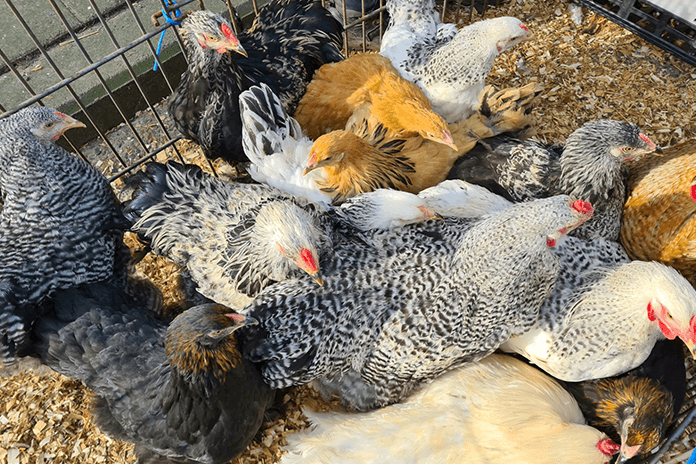
Health issues
There are all sorts of health issues that are brought back to overcrowding. When chickens live too close to each other, they pass on diseases to each other. Firstly, spreading parasites and crowded places also attracts bacteria, mold, mites, lice, and many more.
Secondly, more hens in one spot mean more chicken poop, spilled water or food, and chickens that keep running over the spilled water and poop. The coop’s bedding becomes soiled and dirty, leading to filthy living conditions, which can cause a coccidiosis outbreak and many other diseases.
Bullying
Humans also like our own space, and we can get annoyed when people come too close. Chickens are the same. They will get moody and mad when they don’t have enough room to stretch their wings. So it’s possible (and likely) they’ll fight one another or bully or be bullied. A big problem is feather plucking, where the dominant bird plucks feathers of peck members lower on the pecking order. Or pecking, when the dominant chicken pecks another chicken, sometimes till they’re dead.
You can protect chickens with bald spots from pecking and aggression with some countermeasures, like pinless peepers or a chicken saddle. However, these won’t solve the fundamental space issue.
Hens stop their egg production
Stressed hens stop laying eggs, so giving them all the room they need makes perfect sense.
conclusion
Always make sure you have enough space for your entire flock. Never make a chicken coop too crowded, and you’ll enjoy these happy backyard pets for a very long time!
Credits Featured Image: @tinyfarm_homestead (IG)






















